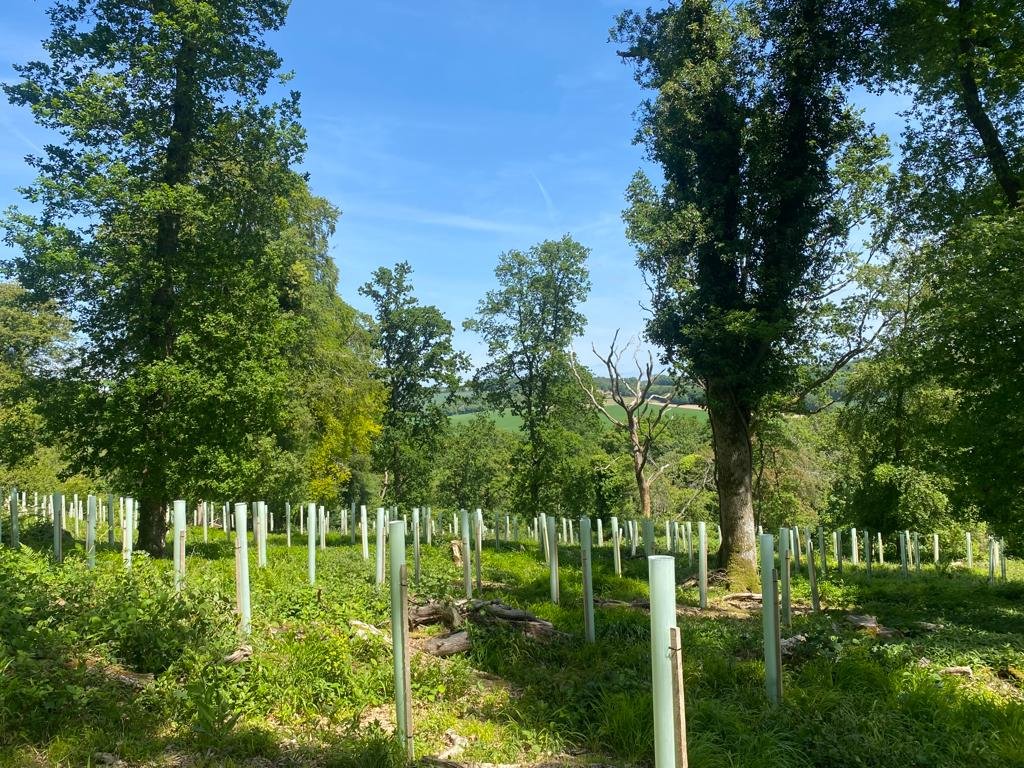Sussex – England
Historical woodland in the South Downs National Park damaged by ash dieback disease
BEFORE
AFTER
Context
This woodland is part of a much larger block in the South Downs National Park on a prominent slope along one edge of a shallow valley.
Very strong storms damaged this historical forest, weakening it and making it more prone to ash dieback disease.
A public right of way runs through part of the stand allowing users to enjoy the developing new woodland.
What the owner needed help with
The land was covered with a composition of predominantly ash with some oak, beech, and field maple. The ash trees were either dead or dying due to ash dieback disease and were felled before the complete collapse of the stand.
The owner wanted to replace diseased trees with an improved mix of native species with high wildlife benefits.
What we did
Our project consisted in the felling of most of the dead or sick ashes.
The soil preparation activities consisted of mowing and mulching the brash. Also the stumps of sick/dead trees as well as some undergrowth were left in situ to provide biodiversity and habitats for wildlife (invertebrates, fungi). Lastly, a mulcher will be tracked to alleviate ground compaction.
In January/February 2023, 1660 new trees were planted, sourced at a local nursery. A mix of Quercus robur, Sorbus torminals, Prunus avium, Carpinus betulus, Tilia cordata and Acer campestre were planted in 3x2m random mixture.
The cleaning of affected ashes has proceeded in the spring of 2023.
The trees all have recycled tree guards to protect them against fallow dear pressure.
When did the project take place
Winter 2022/2023 and 2023/2024
Size of the project
Planting of 6640 diverse broadleaves on 4,9 ha.
















